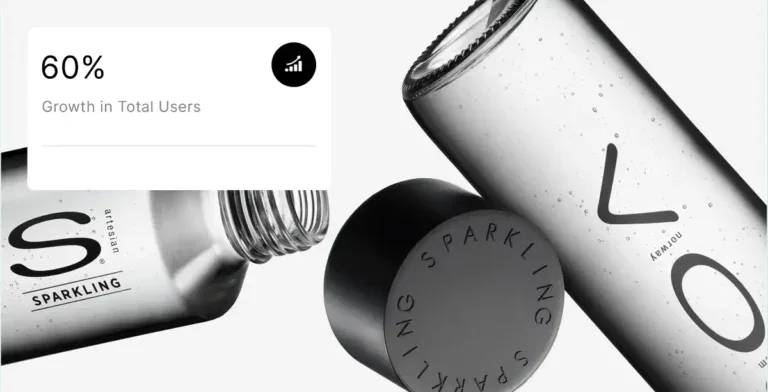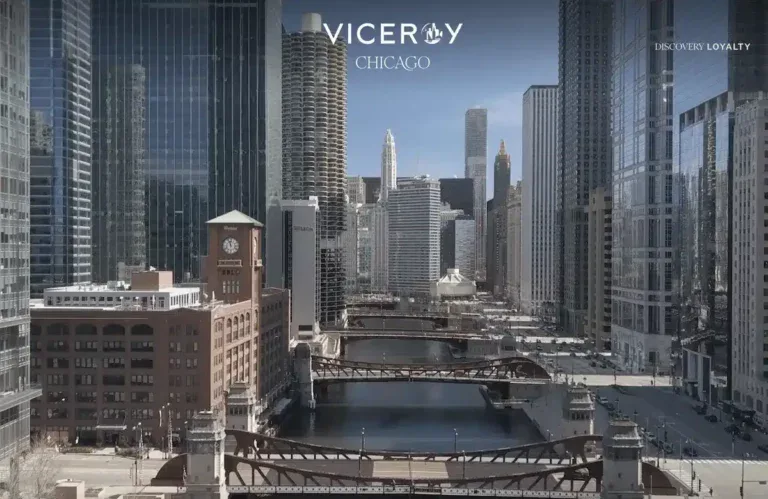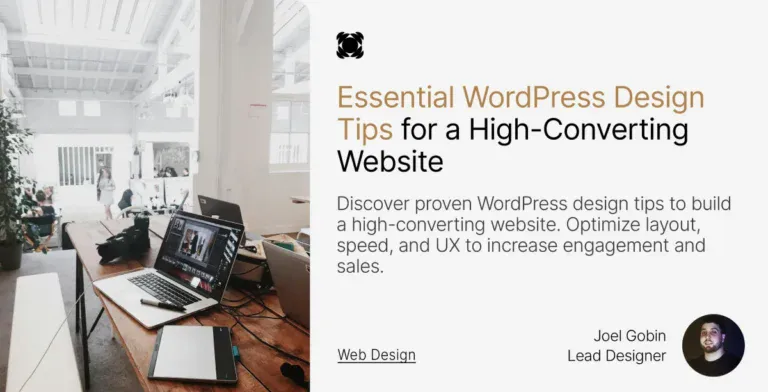75% of users assess a company’s credibility based on its website design.
This means that, now more than ever, brands all over the world have to work extra hard and dedicate time to their website if they want to be successful.
Even if you have already created a website or not, you should take care of these mistakes if you want your brand to thrive in Chicago.
While they might not seem as bad on paper, the reality is that these mistakes can cost you hundreds, if not thousands, of dollars each month.
Below we have the biggest web design mistakes Chicago business owners make all the time. These mistakes end up hurting their brand a lot more than they might think.
Whether you’re making a new website or redesigning your website, make sure that you’re not suffering from any of these issues.
Are you trying to fix your website’s issues but don’t know where to start? Let us help.
17 Biggest Web Design Mistakes Chicago Business Owners Make
This list is in no particular order; you should take all of these issues into consideration and take care of them as soon as possible.
1. No Customer Persona
What’s the point of creating a website and working for dozens of hours if you’re talking to the void?
Without customer personas, it’s difficult to reach the specific audience that wants your product or service.
There’s a saying that goes, “If you talk to everyone, you talk to no one.” And this is especially true in marketing.
Make sure that everything on your website is trying to attract a specific audience, or your web design will never get the conversion rates it deserves.
2. Slow Loading Website
This is a common issue that affects hundreds of different Chicago brands without their knowing.
If your website takes more than 3 seconds to load, then you have a slow website by Google’s standards.
In fact, if your website takes more than 3 seconds to load, then you can expect to lose at least 32% of potential visitors.

This means that if you want to stand out as a Chicago business, you should ensure that your Chicago website has quick load times without sacrificing its look and functionality.
A great tool you can use to check your website’s speed is PageSpeed Insights.
3. Unintuitive Navigation
A fine line exists between creating a navigation that is fun to use and creating a navigation that is complicated to use. Visitors don’t want to have to work to go through your website. They want to find what they’re looking for as quickly as possible.
While creative navigation can be good to keep a visitor’s attention on your website, it can often backfire if it’s too complicated to understand quickly.
Chicago brand’s web design should be simple and easy to navigate regardless of where the visitor is.
Pro tip: Less is more! Don’t be afraid to make your navigation simple and easy to use. This makes it simple for everyone who checks your website to find what they are looking for without issues.
4. Lack of Payment Options

We see this all the time. A brand’s website looks great, the copy for the products is solid, and the navigation is exceptional.
But once the visitor gets to the checkout page, they notice that it only accepts debit, credit, and PayPal.
Not having different payment methods can severely hurt your website because it forces a potential client to use a specific payment method that they might not feel comfortable using on your site.
Or they might just not have any of your preferred payment methods and have to leave without any purchases because of it.
Having multiple payment options is a must-have web design feature for any Chicago brand.
Make sure that you offer as many payment methods as possible so that people from Chicago and all over the world have no issues paying for your product or service.
5. Blocks of Text
Nothing deters visitors from exploring a website more than blocks of text. Not only is it hard to skim through blocks of text, but most visitors won’t care enough or have the attention span to go through it all.
Make sure to cut your content into bite-sized pieces so visitors can quickly read the content without feeling overwhelmed by a massive block of text that reminds them of college.
Remember, you want to make it as easy as possible for potential customers to go through your website. Walls of text do the exact opposite.
6. Full of Fluff
This mistake ties very closely to the last one. Generally, when we see blocks of text in a modern Chicago website, it tends to be due to adding an obscene amount of fluff.
When we say fluff, we mean words that don’t add absolutely anything to the paragraph they’re in. It’s usually used to pad the word count or make a certain area seem fuller.
While it might seem like a good idea to add some fluff to your website, it just hurts it instead.
People in Chicago live an active lifestyle and don’t have much time to waste, so having to go through fluff to find out what a product offers can make them leave altogether.
Explore how we increased AW-Lake’s user count by 219% after we provided our web design services and redesigned their website.
7. Not Mobile-Friendly
In today’s world, not having a mobile-friendly website is a massive loss for your business. Not only does it affect how visitors interact with your website, but it severely hurts your SEO ranking.
Google’s search engine values a website that looks good and navigates properly on mobile devices. This means that if you want to improve your SEO ranking and gain organic traffic, then having a mobile-friendly website is mandatory.
If you don’t have a website yet, then you should highly consider getting a mobile-first design for your Chicago website.
Not only will it make the customization process easier, but it will make it so your website adapts perfectly to mobile devices.
8. Keeping Underperforming Content
It can seem hard to do, but removing content that isn’t doing well is also important. This means articles that receive zero traction after months of publication.
Pages that serve no purpose or could be remade into something better are also great candidates to be on the chopping block.
Don’t be afraid to remove content from your website if it serves no clear purpose anymore. This also frees up keywords and ideas you can use later on.
Cleaning your blog of content that might feel subpar will only improve your visitors’ experience if they ever check your content.
9. Not Caring for Metadata
One of the biggest web designs mistakes you can make as a Chicago business owner is not to take advantage of your metadata.
Whenever you create a new page, it should have a proper title and a good meta description. This isn’t just for visitors to quickly know what the page is about before clicking on it; it also helps Google’s search engine rank your page better.
This doesn’t mean that you should optimize your meta descriptions to the point where there are only keywords. There should be a balance between adding your main keyword and making sure the description makes sense to anyone glancing over it.
Remember, you optimize for Google, but you write for your ideal customer.
10. No Goals or Way to Measure Them
What’s the point of creating content and making sure your Chicago-based website looks its best if you don’t know what is working and what isn’t?
Without measuring your success and effectiveness, it’s very difficult for you to make adjustments that improve your business.
Making sure you are constantly creating goals for your website that are measurable and tied to reality is important for website growth.
When we say “tied to reality,” we mean goals that are reachable within a reasonable timeframe.
While shooting for the stars is fantastic and is what every brand should do, it also makes it really hard to measure. It’s nearly impossible to measure and quantify “being successful” as a goal compared to “Get a 20% increase in organic traffic in 2 months.”
There are several ways you can analyze your website so you can find out what is working and what isn’t.
The first and most used option is to use Google Analytics. It gives you insight into how your website is performing and how visitors are interacting with your website.
11. Bad Calls to Action
Calls to action are an essential part of every good Chicago-based website and should be thought about much more than most people do.
Your content can be great and convincing, but if the CTA is boring or lackluster, then people won’t care about clicking it.
Your CTAs shouldn’t just be “subscribe.” They should add value and incentivize people to click once they finish reading a paragraph or looking at a product.
Your CTAs shouldn’t feel vague or generic; they should be direct and to the point. What does the visitor get for clicking on it? Does the CTA explain it quickly? No? Then it doesn’t work.
12. Zero Care For SEO
Creating a website and not caring about its SEO is fatal for your brand. While you can be a successful brand with no SEO work at all, you are making it extremely difficult to do so. You would have to rely on social media and PPC to get people to check your website.
By focusing on your SEO strategy and creating content with SEO in mind, you can increase your overall reach in a passive manner.
SEO is even more important if your brand is trying to target a local audience. Local SEO is a fantastic way to get people to find out about your brand and go to your physical location.
Web design and SEO go hand in hand all the time so make sure to work on both.
SEO is a necessity for every Chicago brand that takes itself seriously and wants to grow consistently year after year.
13. Lack of Content Creation
Your website should have a place where you can post new content that you create every week. Ideally, you want to create content on a consistent basis.
Creating no content not only hurts you as a brand, but it tells Google that your website is stagnant. Avoid this by publishing at least two pieces of content every week.
If you don’t know what to create, you can check what your main competitors are doing and try to find fun and interesting twists on their content.
14. No Cybersecurity Whatsoever
Having no security measures for your website is not only a danger for your website as a whole, but also for your customers who give out their information to buy your products.
A security breach that results in the theft of your customers’ information massively damages their trust and leads them to never trust your brand again.
Avoid this by applying the correct safety measures for your website.
If you want to learn more about the types of dangers you face in cybersecurity, you can read our latest article.
15. Not Optimizing Images
It’s fantastic to have well-shot images and customized illustrations on your website, but you must ensure that you compress and optimize those images properly.
Why?
Because anyone who clicks on your website for the first time has to wait to download each one of those images for the page to completely open.
If each of those images is 2 MB, then every visitor would have to wait a while before everything loads.
You can avoid this by using a modern compression type such as WebP. This is Google’s official compression algorithm that helps you compress an image without losing most of its resolution and quality.
Optimizing your images is essential for web design and should always worked on.
We highly recommend you go through your website and use WebP on all your images as soon as possible. We promise that you’ll see a load time difference as soon as you’re done.
16. Excessive Use of Pop-ups
Pop-ups effectively force visitors to subscribe or incentivize them to purchase a product they might be interested in.
That being said, there’s a limit to how many you can use before a visitor gets annoyed and leaves.
For the most part, one pop-up is enough per visitor. They can trigger this once they’ve been on the homepage for a few seconds and scroll down, or as soon as they land on the homepage.
Two pop-ups are generally pushing it, and people might get a bit annoyed by having to close yet another pop-up.
This is a totally different story if the second pop-up offers them a discount of the sort since they might be a lot more welcoming if the pop-up offers them something in return.
Anything over 2 pop-ups is too much and will only annoy the visitor and make them want to leave. No one wants to deal with constant pop-ups as they’re trying to go through a product description or video.
Learn how we increased the engagement rate of Voss Water by 43% with a new web design here.
17. Overlooking Accessibility
Last but not least, we have accessibility.
Not having a Chicago-based website that is accessible not only alienates a portion of your audience, but it also could get your brand in trouble if you’re not careful.
The Americans with Disabilities Act, better known as the ADA, is an act that every website should comply with if it wants to avoid any sort of legal action taken against it.
There are several key components of an accessible website that you can implement right now.
Good Contrast: Make sure that your background and your text have enough contrast between each other so that everything is easy to read.
- Proper Use of Alt Text: Every image should have alt text explaining what the image is about in detail.
- Keyboard Only Navigation: Ensure that users can access your entire website using only keyboard actions. This is a must for people with motor disabilities who can’t use a touchscreen or a mouse.
- Simple Navigation: Don’t complicate your navigation and try to make it as easy to use as possible. This includes top menus, headers, and also the footer if you have one set up.
By applying all these accessibility features to your website, you’ll have a properly accessible website that most people can access and go through.
Get a Custom Website for Your Chicago Brand with Blacksmith
After going through these 17 web design mistakes Chicago business owners make all the time, you might feel inspired to fix any of these issues you may have on your own website.
But doing this takes a lot of time, and it’s time you could be using for other aspects of your business.
So what now?
That’s where we come in. Here at Blacksmith, we’re experts in everything web design related. From creating a website from scratch to redesigning your website for a more mobile-friendly approach.
As a professional web design company in Chicago, we have a group of seasoned web designers ready to make your website look its best while performing better than ever.
Still unsure if investing in a custom website for your brand is the right choice? Click here, to schedule a call so we can audit your website and show you all of the issues that are stopping potential customers from buying anything from you.









